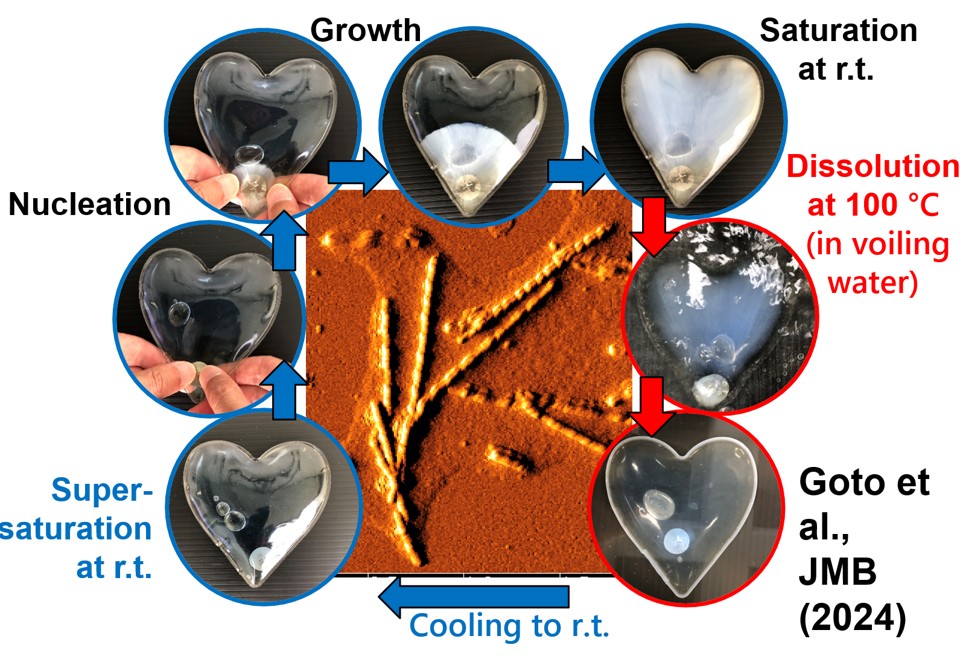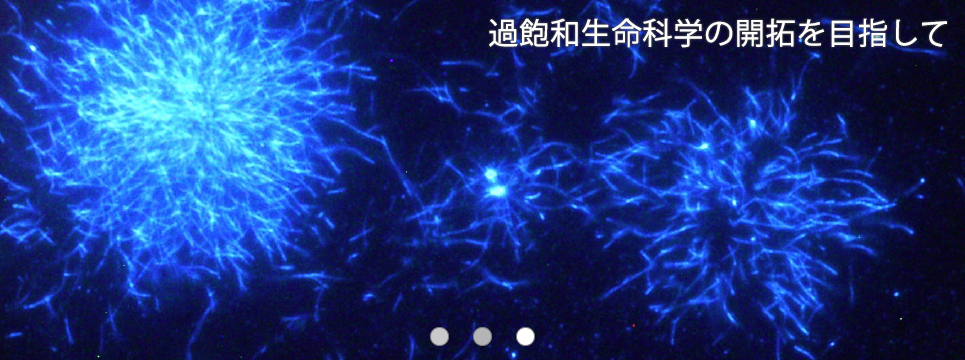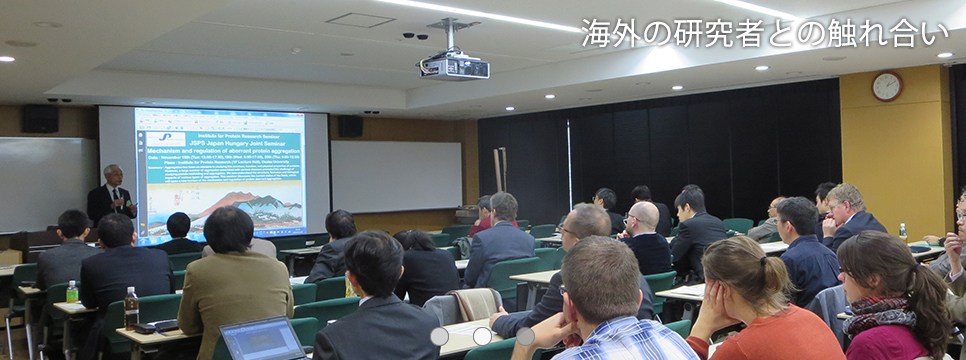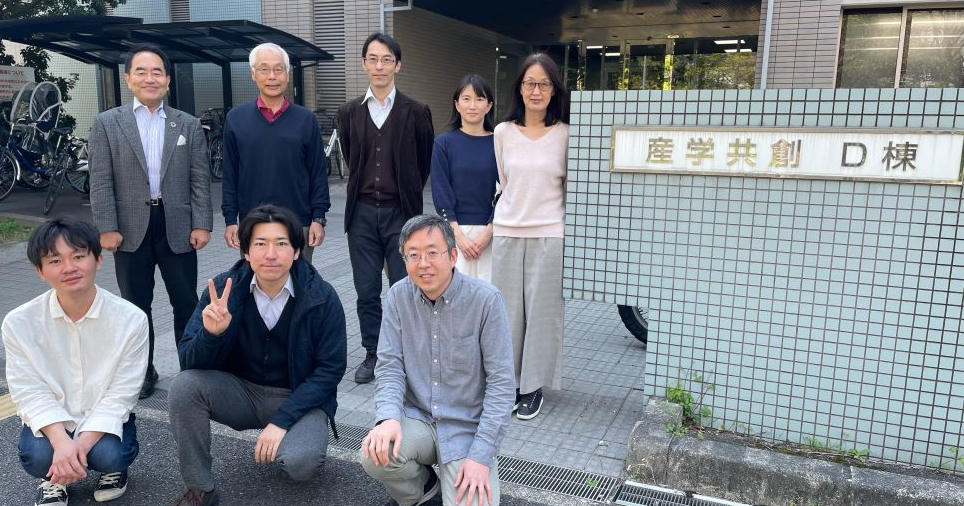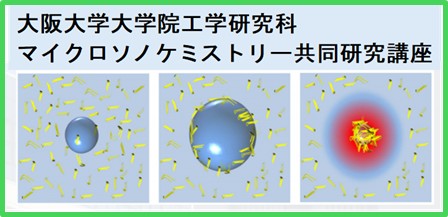News
-
*後藤祐児(Goto, Yuji)の全論文リストは Google Scholar プロフィール を参照してください。
-
2025年12月29日「ATPによるαシヌクレインアミロイド形成」に関する論文を発表しました
2025.12.29 Our latest study is now online! Keiichi Yamaguchi*, Maya Sawada, Kichitaro Nakajima, Hirotsugu Ogi, Yasushi Kawata, Yuji Goto
Adenosine Triphosphate Promotes Amyloid Formation of α-Synuclein in a Concentration-Dependent Manner,
Langmuirhttps://pubs.acs.org/doi/abs/10.1021/acs.langmuir.5c05230, (2025)[DOI: 10.1021/acs.langmuir.5c05230]
-
2025年12月1日「円二色性スペクトルに基づく蛋白質二次構造のディープラーニング予測」に関する論文を発表しました
2025.12.1 Our latest study is now online! Kouya NakandakariTomoki OtaKichitaro NakajimaKeiichi YamaguchiYuji GotoJózsef KardosHirotsugu Ogi*
Deep-Learning Prediction of Protein Secondary Structure from Circular Dichroism Spectrum Using Three-Layer Image Recognition,
Analytical Chemistry, (2025)[DOI: 10.1021/acs.analchem.5c04550]
[DACARI link]
解説
-
Mini-Workshop on alpha-Synuclein Amyloid Formation
Date: Tuesday, June 17, 2025, 2:00 PM - 5:00 PM
Place: Lecture Hall, Institute for Protein Research, Osaka University
14:00-14:50: Conformational switch in the alpha-synuclein C-terminus domain directs its fibril polymorphism
Dr. César Aguirre Martínez (Osaka University Graduate School of Medicine)
15:00-16:00: Mechanisms of alpha-synuclein aggregation and inhibition
Prof. Jean Baum (Department of Chemistry and Chemical Biology, Rutgers University)
16:00-17:00: Roundtable discussion: seeking the new perspective of the amyloid world.
Mini-Workshop on alpha-Synuclein Amyloid Formation
-
2025年2月4日 総説論文「過飽和の解消によって引き起こされるアミロイド繊維形成」を発表しました。
2025.2.01 Our latest study is now online! Keiichi Yamaguchi, Kichitaro Nakajima, Hirotsugu Ogi and Yuji Goto.
Mechanism of amyloid fibril formation triggered by breakdown of supersaturation,
npj Biosensing 2, Article number: 7, (2025)[DOI:10.1038/s44328-025-00028-z]
-
2025年2月3日 論文「ペリスタポンプによるアミロイド形成反応」を発表しました。身近にあるペリスタポンプが、さまざまな蛋白質のアミロイド線維を作り出します。せん断ストレスが生体内でのアミロイド形成の要因であることを示唆します。
2025.2.01 Our latest study is now online! Yuji Goto,Tomoki Ota, Wenlou Yuan, Ikuko Yumen, Keiichi Yamaguchi, Hirokazu Matsuda, Suguru Yamamoto, and Hirotsugu Ogi.
Peristaltic pump-triggered amyloid formation suggests shear stresses are in vivo risks for amyloid nucleation,
npj Biosensing 2, Article number: 4, (2025)[DOI:10.1038/s44328-025-00027-0]
ペリスタポンプ・アミロイド形成装置の構成
Amyroid River of No Return動画
-
2025年1月28日 「枯渇効果(depletion effect)によるアミロイド形成促進」に関する論文を発表しました。液液相分離ドロップレットの界面において枯渇効果が働き、アミロイド形成が促進されていることを示しました。
2025.2.xx Our latest study is now online! Keiichi Yamaguchi, Joji Mima, Kichitaro Nakajima, Hiroki Sakuta, Kenichi Yoshikawa, Yuji Goto.
Accelerated amyloid fibril formation at the interface of liquid-liquid phase-separated droplets by depletion interactions,
Protein Science, (2025)[DOI:10.1002/pro.5163]
Models of depletion effects on amyloid formation
-
2024年2月19日 「過飽和、アミロイド形成、プロテオスタシス」に関する総説論文を発表しました
2024.2.19 Our latest study is now online! Yuji Goto, Kichitaro Nakajima,Suguru Yamamoto, Keiichi Yamaguchi.
Supersaturation, a Critical Factor Underlying Proteostasis of Amyloid Fibril Formation,
Journal of Molecular Biology, (2024)[DOI:10.1016/j.jmb.2024.168475]
-
2023年8月21日 構造形成研究室同窓会を7月29日に開催しました。
2023.8.21 Alumni reunion was held on July 29th.
ポスターはこちら
Poster
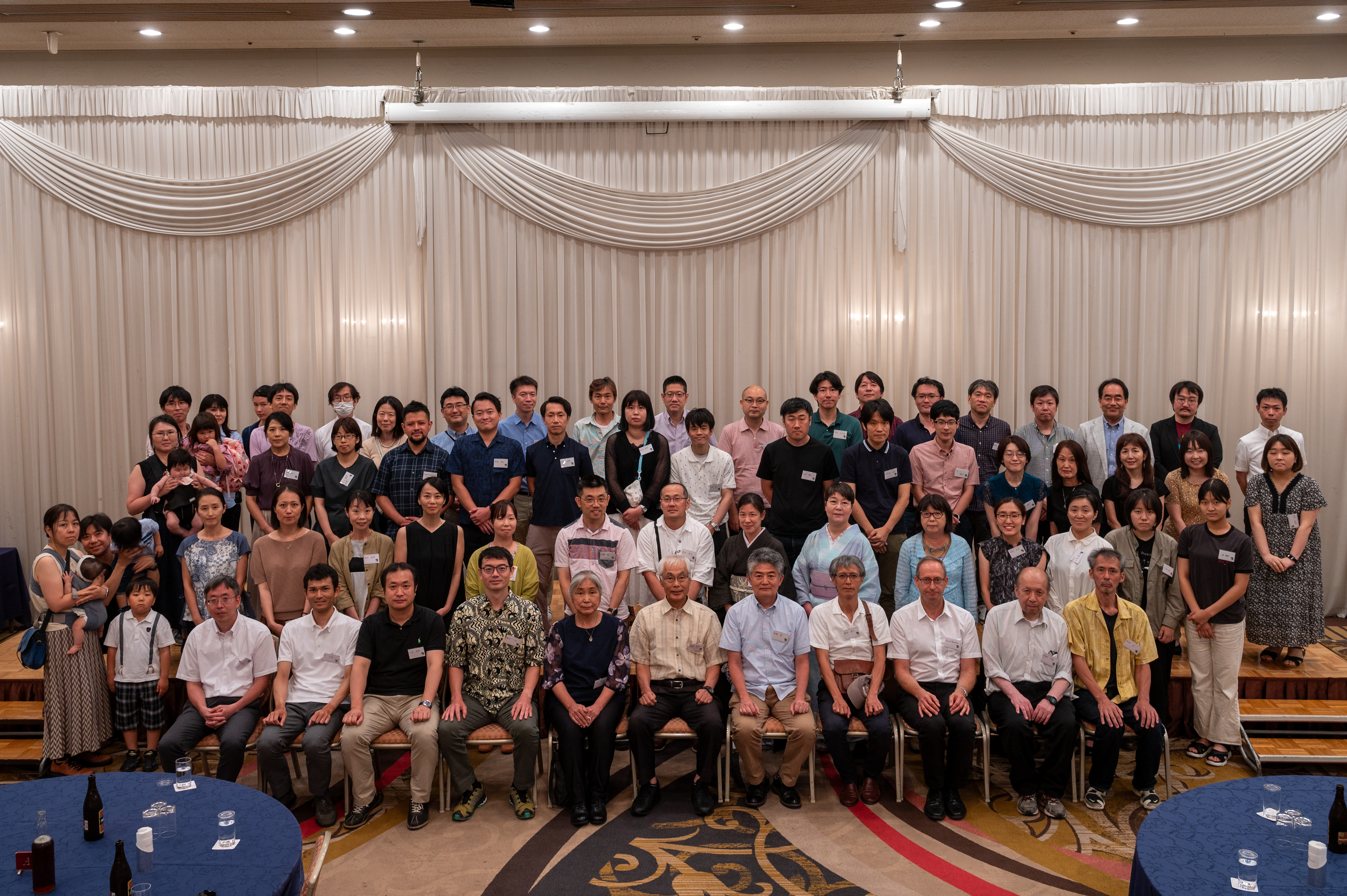
-
2023年3月23日 論文を発表しました
2023.3.23 Our latest study is now online! Keiichi Yamaguchi, Kichitaro Nakajima, Yuji Goto.
Mechanisms of polyphosphate-induced amyloid fibril formation triggered by breakdown of supersaturation,
Biophysics and Physicobiology, (2023)[DOI:10.2142/biophysico.bppb-v20.0013]
-
2023年3月14日 学振拠点セミナー(Munich)<2/16-17開催>の報告書を掲載しました
2023.3.14 Our report of Munich has been uploaded.詳細はこちら
Report
-
2023年3月7日 第3回若手育成ワークショップ("蛋白質のCD測定と二次構造解析)<1/27開催>の報告書を掲載しました
2023.3.7 Our report of seminar has been uploaded.詳細はこちら
Report
-
2023年2月27日 学振拠点セミナー(Protein folding and misfolding)<12/6開催>の報告書を掲載しました
2023.2.27 Our report of seminar has been uploaded.詳細はこちら
Report
-
2023年1月24日 学振拠点セミナー(Wollongong)<11/21-24>の報告書を掲載しました
2023.1.24 Our report of Wollongong has been uploaded.詳細はこちら
Report
-
2023年1月12日 第3回若手育成ワークショップ "蛋白質のCD測定と二次構造解析" を1/27(金)に開催します。奮ってご参加ください。
2023.1.12 We will hold a workshop on 1/27."BeStSel with Best Scene, toward Best Sailing"
ポスターはこちら
※要事前参加登録、参加費:無料
参加登録はこちら
第2回ポスターはこちら
第1回ポスターはこちら
Poster
-
2022年12月5日 JSPS Core-to-Core seminar "Protein folding and misfolding"を12月6日に開催します。奮ってご参加ください。
2022.12.5 JSPS Core-to-Core seminar "Protein folding and misfolding"
ポスターはこちら
Poster
-
2022年10月3日 論文を発表しました
2022.10.3 Our latest study is now online! Kichitaro Nakajima, Keiichi Yamaguchi, Masahiro Noji, César Aguirre, Kensuke Ikenaka, Hideki Mochizuki, Lianjie Zhou, Hirotsugu Ogi, Toru Ito, Ichiei Narita, Fumitake Gejyo, Hironobu Naiki, Suguru Yamamoto and Yuji Goto.
:Macromolecular crowding and supersaturation protect hemodialysis patients from the onset of dialysis-related amyloidosis,
nature communications, (2022)[DOI:10.1038/s41467-022-33247-3]
プレスリリースの全文はこちら
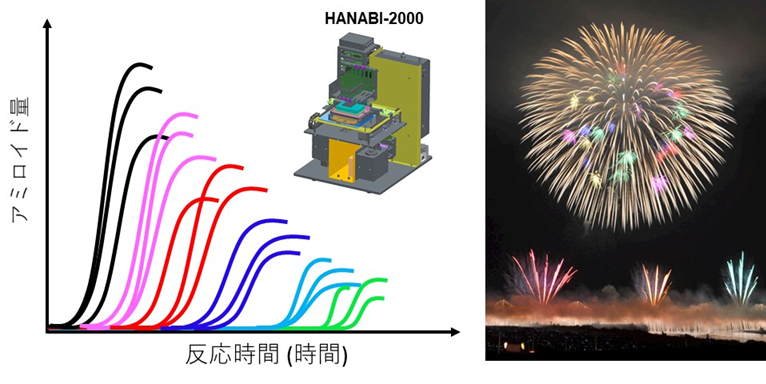
-
2022年7月25日 寄附講座の教育研究成果等の概要を掲載しました
2022.7.25 Our summary of achievements has been uploaded.詳細はこちら
-
2022年6月30日 蛋白質凝集制御デバイス寄附研究部門2020-2021年度活動報告および寄附講座終了報告を掲載しました
2021.6.30 Our 2020-2021 activity report has been uploaded.詳細はこちら
-
2019年 11月13日 霜月セミナー "Revisiting the most amyloidogenic region of insulin"
2019.11.13 霜月("Shimotsuki"=November) seminar "Revisiting the most amyloidogenic region of insulin"
ポスターはこちら
Poster
-
2019年 9月12日、9月13日 蛋白研セミナー"液-液相分離の新たな展開へ向けて"
詳細はこちら
-
2019年7月19日 第2回若手育成ワークショップ "蛋白質のCD測定と二次構造解析" を開催します。
ポスターはこちら
※要事前参加登録、参加費:無料
参加登録はこちら
-
2019年6月19日 神無月セミナー "リン酸化酵素のフォールディング中間体を標的とした創薬研究"
ポスターはこちら
-
2019年5月14日 皐月セミナー "タンパク質デザインによるバイオなのロボットの創成を目指して"
ポスターはこちら
-
2018年10月19日 神無月セミナー "Should the Treatment of Amyloidosis Be Personified? Molecular Mechanism of Amyloid Formation by Abeta Peptide and Its Fragment"
2018.10.19日 神無月("Kan-nazuki"=October) seminar "Should the Treatment of Amyloidosis Be Personified? Molecular Mechanism of Amyloid Formation by Abeta Peptide and Its Fragment"
ポスターはこちら
Poster
-
2018年 8月11日 構造形成研究室 葉月セミナー
ポスターはこちら
-
2018年 6月29日 水無月セミナー "Role of H3K27 Crotonylation in Gene Transcriptional Repression in Chromatin"
ポスターはこちら
-
2018年 6月27日 第3回 APPA/PS/PSSJジョイントワークショップ&蛋白研セミナー
ポスターはこちら
-
2018年 6月25日 水無月セミナー "Intrinsic disorder, protein aggregation, and membrane-less organelles"
ポスターはこちら
-
2018年 6月22日 若手育成ワークショップ 「蛋白質のCD測定と二次構造解析」
ポスターはこちら
-
2018年 6月8日 水無月セミナー "蛋白質凝集と核酸"
ポスターはこちら
-
2018年 5月18日 皐月セミナー "Molecular crowding effect"
ポスターはこちら
-
2018年 4月25日 卯月セミナー “セルピン~ドグマに反する蛋白質”
ポスターはこちら
-
2017年 12月3日、12月4日、12月5日 Australian National University (ANU) & IPR 2nd Joint Symposium 2017 “PROTEIN STRUCTURE AND FUNCTION”
ポスターはこちら
詳細はこちら
-
2017年 9月11日、9月12日 蛋白研セミナー
詳細はこちら
-
2017年 7月29日 文月セミナー3
詳細はこちら
-
2017年 7月18日 文月セミナー2
詳細はこちら
-
2017年 7月 3日 文月セミナー
詳細はこちら
-
2017年 6月21日 蛋白研セミナー(蛋白質科学会)
詳細はこちら
-
2017年1月26-27日 蛋白研セミナー
詳細はこちら
-
2016年10月4日 蛋白研セミナー
詳細はこちら
-
2016年7月30日 蛋白研セミナー
詳細はこちら
-
2016年6月6日 蛋白研セミナー
詳細はこちら
-
2015年11月14日-16日 Australian National University(ANU)&IPR Joint Symposium 2015
詳細はこちら
-
2015年10月6日 神無月セミナー
詳細はこちら
-
2015年6月18日 水無月セミナー
詳細はこちら
-
2015年5月12日 皐月セミナー
詳細はこちら
-
2015年4月17日 卯月セミナー
詳細はこちら
-
2015年2月5日 蛋白研セミナー
詳細はこちら
-
2014年11月18-20日 蛋白研 & JSPS Japan hangary Joint Seminar
詳細はこちら
Research Overview
蛋白質はフォールディングすることによって特異的な立体構造を形成し、機能を発揮します。フォールディング反応を理解することは、蛋白質の構造や機能の基盤を理解することです。
他方、蛋白質がミスフォールディングして形成するアミロイド線維は、アルツハイマー病をはじめとするさまざまなアミロイドーシスの原因物質であり、病因の解明は高齢化社会の重要な課題です。
後藤らは、生物物理化学的手法、熱力学的手法によってアミロイド線維の構造物性や形成機構を研究しています。そして、フォールディングとミスフォールデングの統合理解には、「溶解度」と「過飽和」が重要であることを提唱し、これに基づき「過飽和生命科学の開拓」を目指しています。
Many proteins fold into a specific three-dimensional structure and exert their functions. Clarifying the folding reaction of proteins is a basic task that is a prerequisite for understanding the structure and function of proteins.
The folding reaction is also involved in many biological phenomena. In particular, Alzheimer's disease and prion disease, which are correlated with the accumulation of proteins in human bodies as amyloid fibrils via abnormal folding, are also called folding diseases, and their detailed etiology is awaited.
We study the structure, stability, the molecular mechanisms of folding and formation of amyloid fibrils using various spectroscopic methods such as nuclear magnetic resonance (NMR), circular dichroism (CD), and infrared absorption (FTIR), and biophysicochemical methods such as calorimetry and analytical ultracentrifugation.
